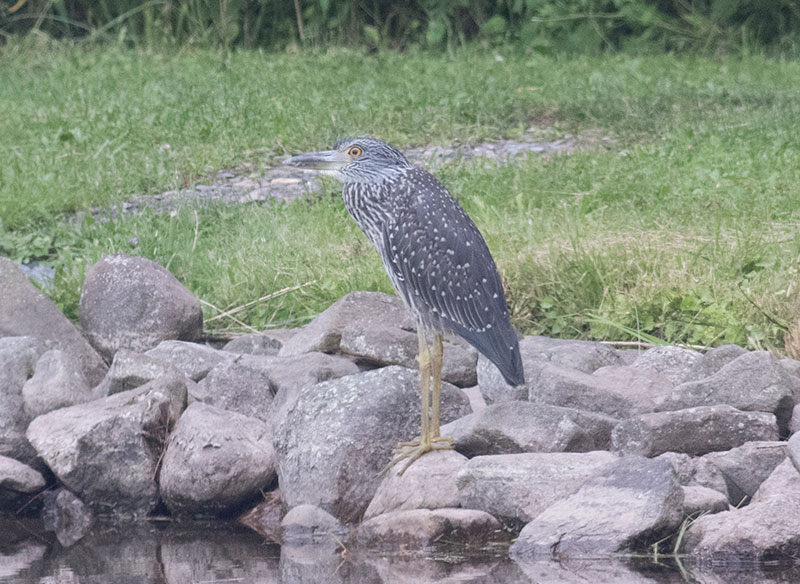Yellow-crowned Night-Heron
7/22/18
By David Brown
On July 11th a yellow-crowned night-heron (Nyctanassa violacea) was found at a pond in northern Lycoming County. A birder spotted it while driving past and recognized it as unusual. Although it is a juvenile it was not born in this area. This species nests in Pennsylvania but only at a few sites in the Lower Susquehanna River Valley near Harrisburg. Although the population as a whole is stable it is listed as an endangered species in Pennsylvania. This is the second record of this species for Lycoming county. The first record was an adult along Lycoming Creek in April 2010.

Yellow-crowned Night-Heron
The yellow-crowned night-heron has a 42 inch wingspan and weighs 1.5 pounds. It is a short and stocky with a thick bill. The primary habitat of this species is wetlands of the southeastern United States. The winter range includes coastal areas of Mexico, Central America, South America, and the West Indies. Its primary diet is crustaceans, such as crayfish. It hunts for prey in shallow water. Like most herons it stalks its prey then makes a quick strike by extending its neck. It can nest alone or in large colonies and is somewhat tolerant of humans. One colony in Harrisburg nests in the trees along the streets of a residential neighborhood.
The black-crowned night heron is the other species of night-heron. One was photographed at Indian Park in Montoursville in April. This is the first time that both species of night-heron have been reported in Lycoming County in the same year.
Other species of herons are common in our area this time of year. Individuals spread out after nesting and take advantage of low water levels. This is called post-breeding dispersal. The most common large heron is the great blue heron which is large and gray. The great egret is slightly smaller than the great blue heron but is white with a large yellow bill. The most common small heron in our area is the green heron which has a green and red plumage. Other possible rarities include the tricolored heron and the little blue heron.
Even in the middle of summer, some species are already showing signs of fall migration. Many shorebirds are beginning their southward migration. Blackbirds are beginning to group together into flocks of hundreds of birds. Large numbers of barn swallows and tree swallows are perching together on telephone wires. Soon raptor migration will begin as bald eagles and ospreys begin their journey south. By September fall migration will be in full swing.